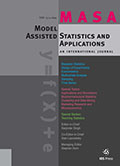Authors: Bekareva, Svetlana | Meltenisova, Ekaterina | Kravchenko, Nataliya
Article Type:
Research Article
Abstract:
This study contains analysis of the influence of changes in the real exchange rate on the results of the monetary policies conducted by the central banks of emerging market economies targeting inflation. The analysis is based on the Taylor rule modified with the Ball rule and the Orphanides rule. The methods used included evaluating variables, such as the GDP, the inflation rate, the real interest rate, and the real exchange rate index, with the Hodrick-Prescott filter (HP-filter) and the two-step cointegration approach of Engle and Granger with structural breaks. Empiric estimates for two countries, Brazil and South Africa, based on
…quarterly data during inflation targeting for 1999–2015, have been obtained. The influence of the exchange rate on the monetary policy results before targeting in the case of South Africa has been analyzed. For the latter economy, our analysis covered the period of 1960–2015. The period under consideration included the 2008 financial crisis, which accounted for the choice of the dates of breaks in the level and regime of the countries’ monetary policies. Our research showed that, although the approach undertaken by the central banks of both countries to using the interest rates for the purpose of inflation targeting was classical, both banks took the fluctuations in the exchange rates into account. A long-term relationship between the interest rate, the GDP gap, the real exchange rate, and the inflation deviation from its equilibrium value has been demonstrated for both Brazil and South Africa. The level shift took place in South Africa in the second quarter of 2008; and the shift in the level and regime in Brazil occurred in the fourth quarter of the same year. The model estimation proves that the significance of the exchange rate fluctuations has become more important since the crisis of 2008. For South Africa, we have empirically proved that after the country’s turn to inflation targeting and dismissal of the official exchange rate, the exchange rate fluctuations have still influenced the results of the national central bank’s policy. We have found the Taylor rule to be acceptable for South Africa and Brazil for a short-term period; in terms of inflation targeting, the interest rate has been positively influenced by the GDP gap and the inflation gap; the impact by the real effective exchange rate has been found to be negative.
Show more
Keywords: Emerging market economy, central bank, monetary policy, inflation targeting, Taylor rule, cointegration, structural breakJEL Classification Codes: E48, E58
DOI: 10.3233/MAS-180451
Citation: Model Assisted Statistics and Applications,
vol. 14, no. 1, pp. 89-102, 2019
Price: EUR 27.50





